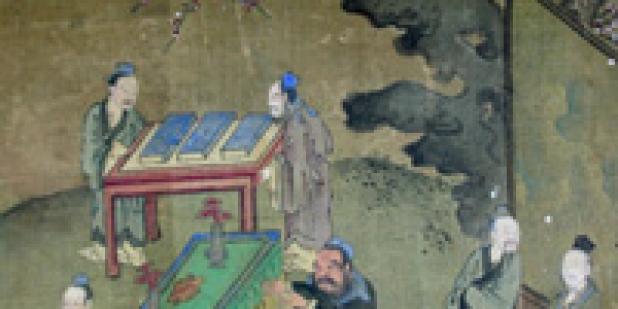Join us for a free one-day workshop for educators at the Japanese American National Museum, hosted by the USC U.S.-China Institute and the National Consortium for Teaching about Asia. This workshop will include a guided tour of the beloved exhibition Common Ground: The Heart of Community, slated to close permanently in January 2025. Following the tour, learn strategies for engaging students in the primary source artifacts, images, and documents found in JANM’s vast collection and discover classroom-ready resources to support teaching and learning about the Japanese American experience.
Mysteries of Kongzhai
Julia K. Murray will speak on Kongzhai, a now-destroyed shrine on the edge of Shanghai, at the University of Texas in Austin.
Where

In recent decades, the religious aspects of traditional veneration of Confucius (ca. 551-479 BCE) have been denied and suppressed, and the ancient sage is usually portrayed as a paragon of secular humanism and ethical culture. This conception makes it hard to grasp the significance of Kongzhai, a now-destroyed shrine on the edge of Shanghai, where a seventh-century descendant allegedly buried Confucius's cap, robe, and jade ornaments. This lecture will examine the multivalent significance of these "relics" and their relationships to alternative forms of representation, such as iconic images and illustrated hagiographies, and will focus particularly on the efforts of 17th and 18th-century patrons to develop Kongzhai into a destination for scholarly pilgrimage.
Julia K. Murray is Professor of Art History, East Asian Studies, and Religious Studies at the University of Wisconsin (http://arthistory.wisc.edu/bio/murraybio.html) . This year she is also a Senior Fellow at the UW Institute for Research in the Humanities, where she is writing a book on the history, visual culture, religious practices, and cultural significance of a now-destroyed shrine to Confucius that formerly stood on the outskirts of Shanghai. She has written widely on Chinese art, and most recently served as the guest-curator and catalogue author for the 2010 exhibition Confucius: His Life and Legacy in Art at the China Institute Gallery in New York.
Featured Articles
Please join us for the Grad Mixer! Hosted by USC Annenberg Office of International Affairs, Enjoy food, drink and conversation with fellow students across USC Annenberg. Graduate students from any field are welcome to join, so it is a great opportunity to meet fellow students with IR/foreign policy-related research topics and interests.
RSVP link: https://forms.gle/1zer188RE9dCS6Ho6
Events
Hosted by USC Annenberg Office of International Affairs, enjoy food, drink and conversation with fellow international students.
Join us for an in-person conversation on Thursday, November 7th at 4pm with author David M. Lampton as he discusses his new book, Living U.S.-China Relations: From Cold War to Cold War. The book examines the history of U.S.-China relations across eight U.S. presidential administrations.




